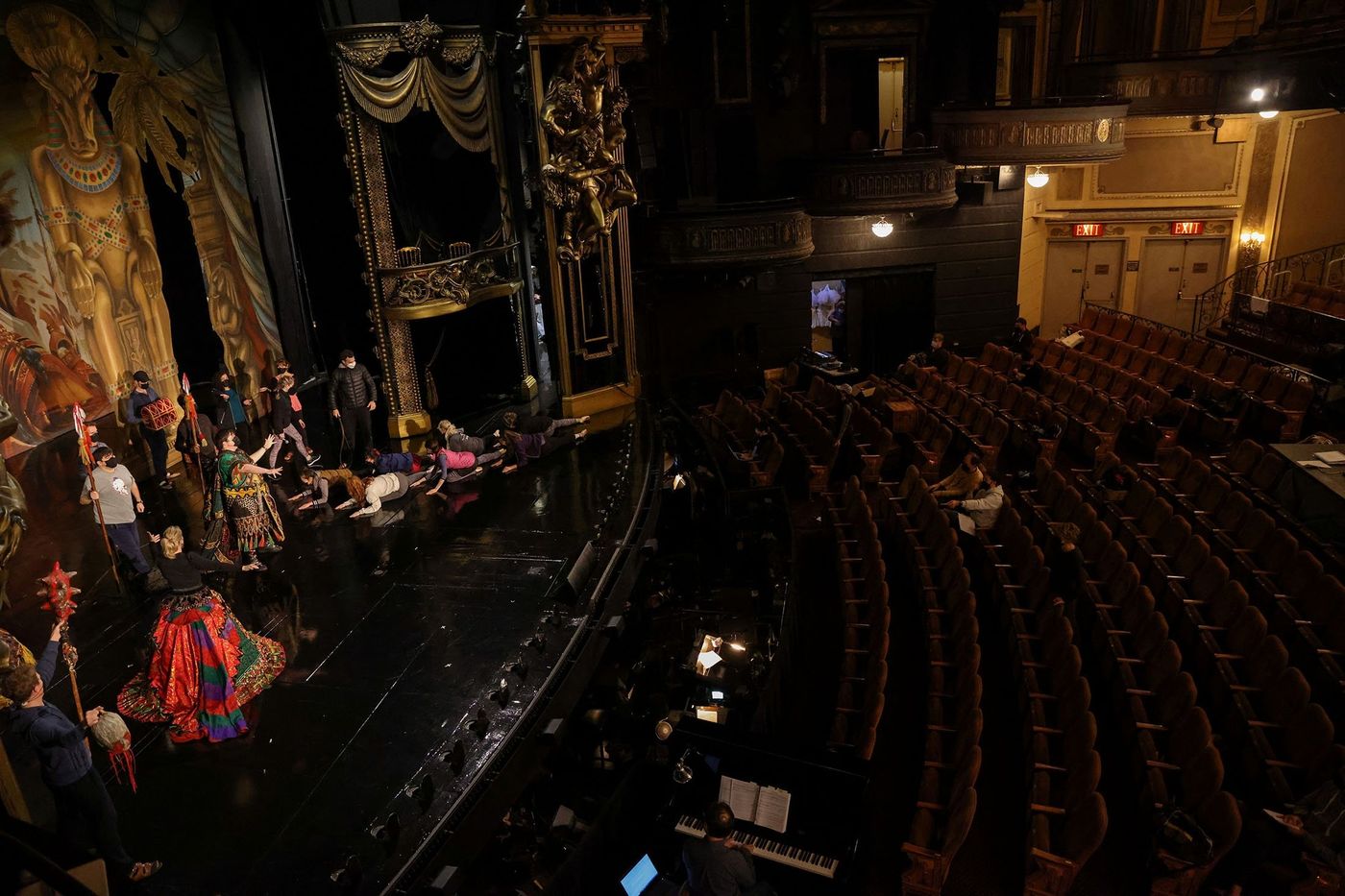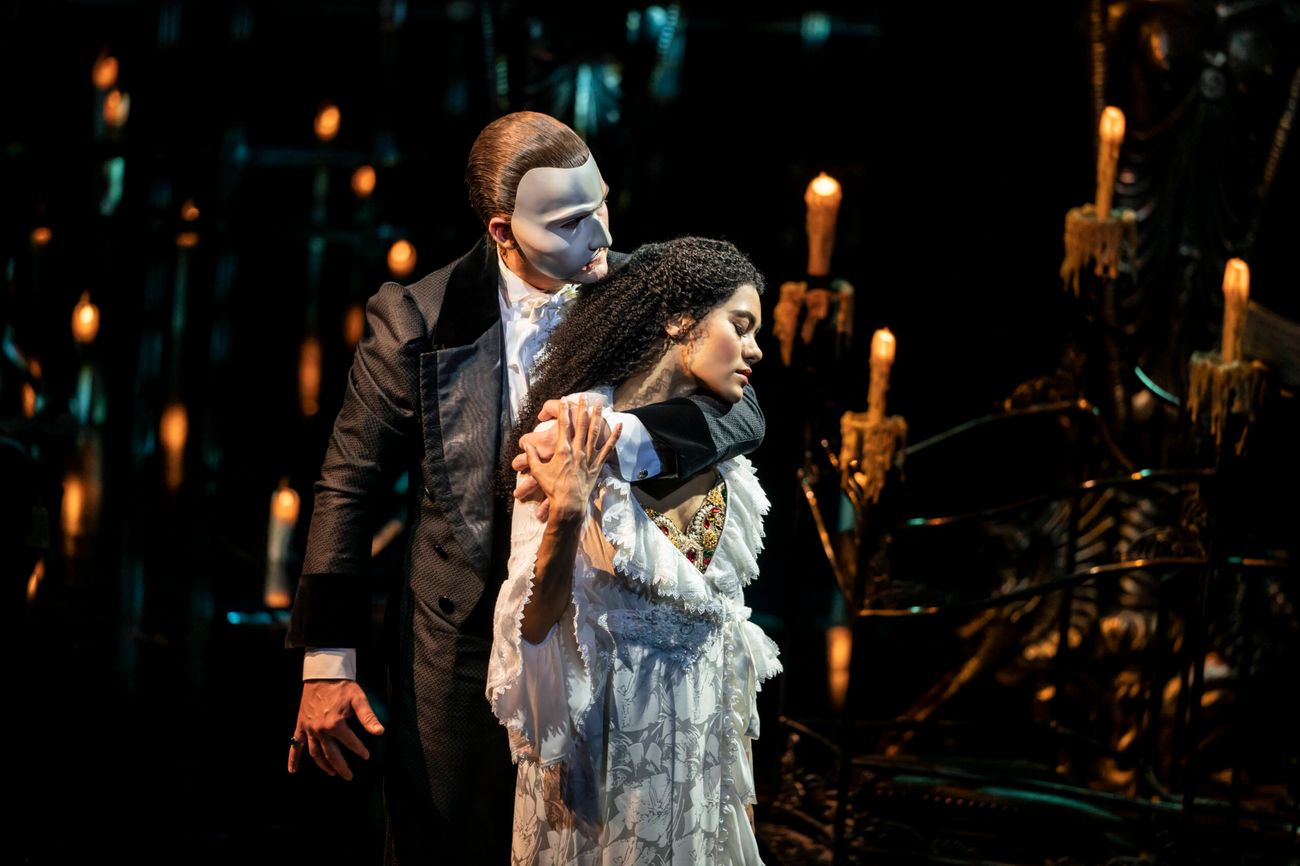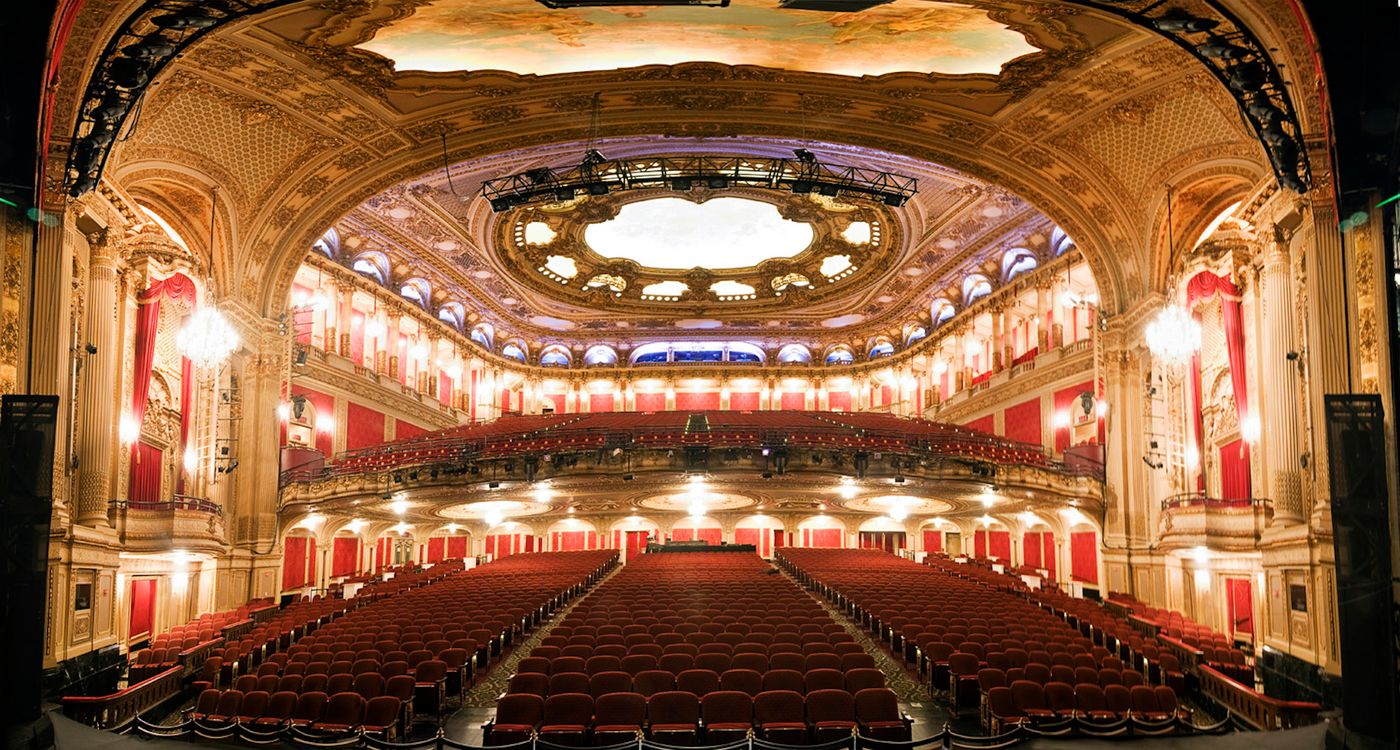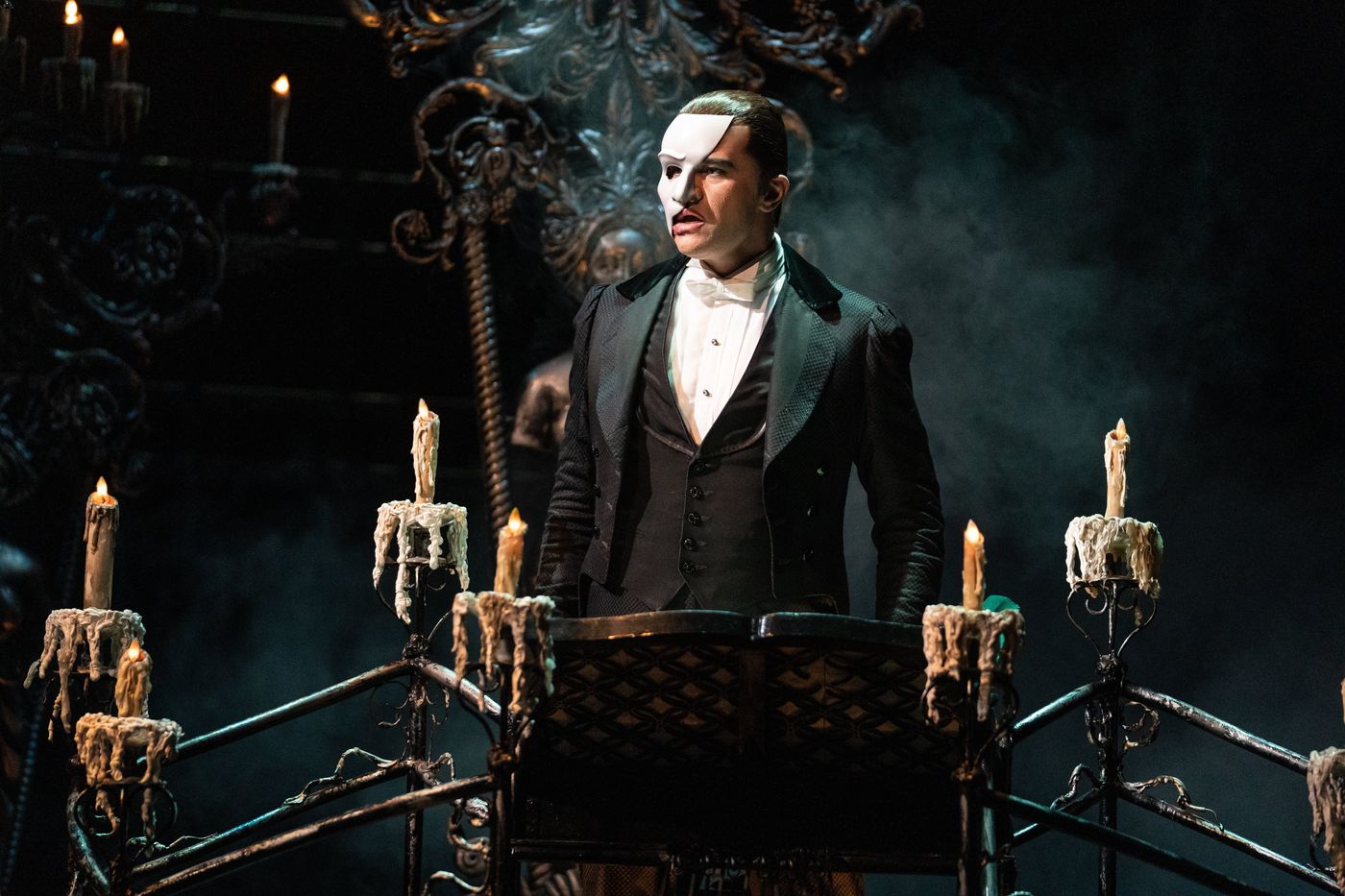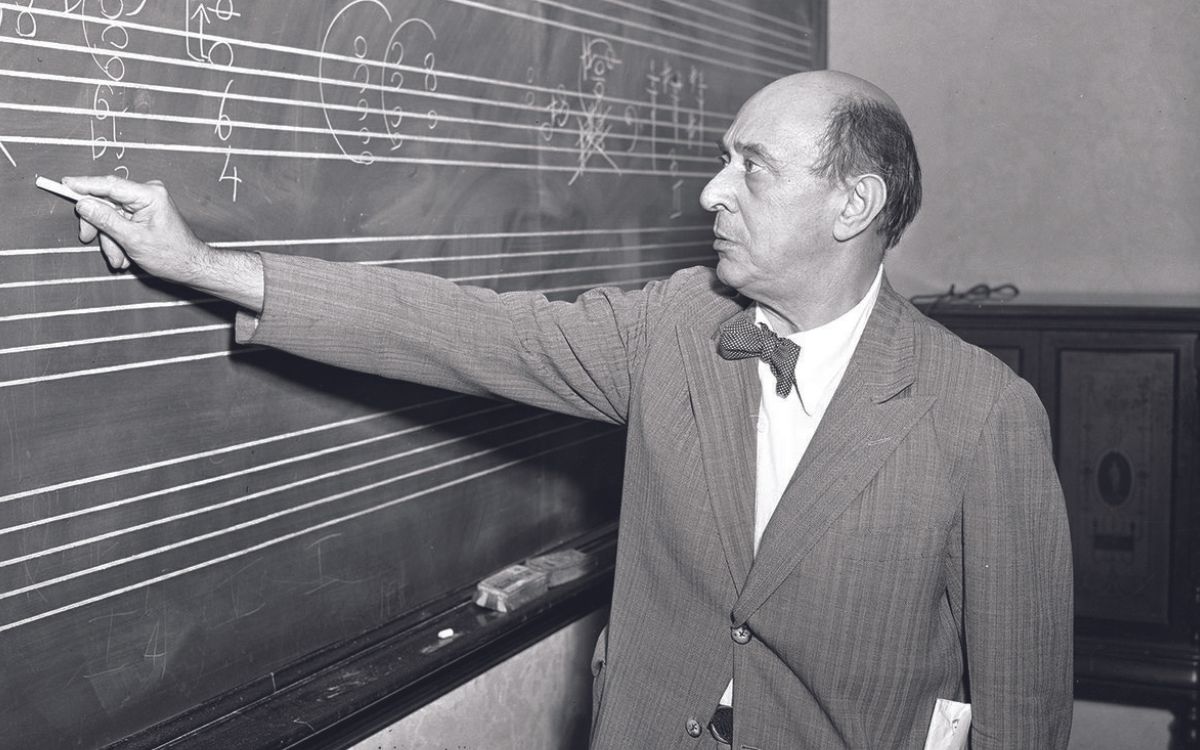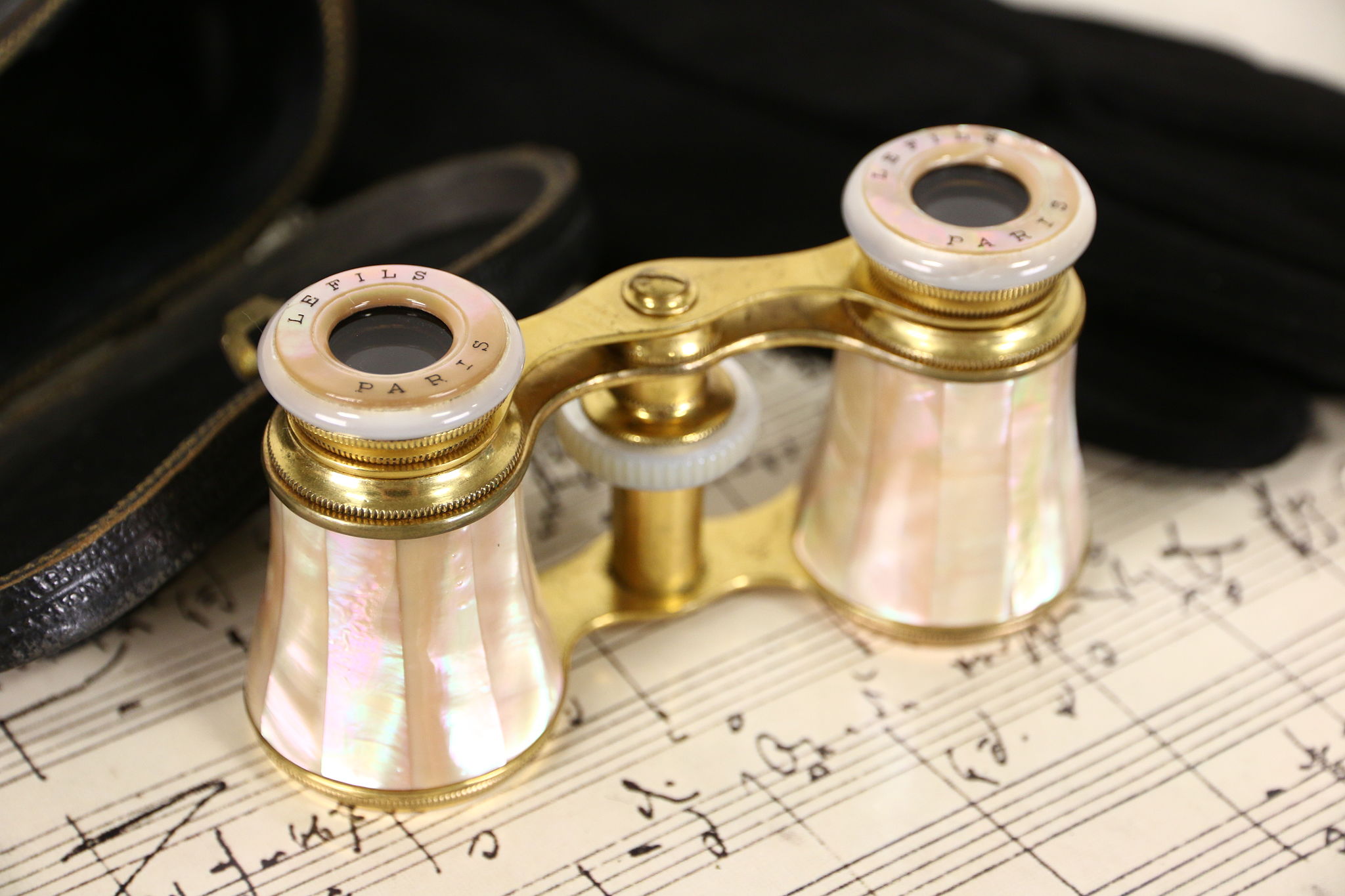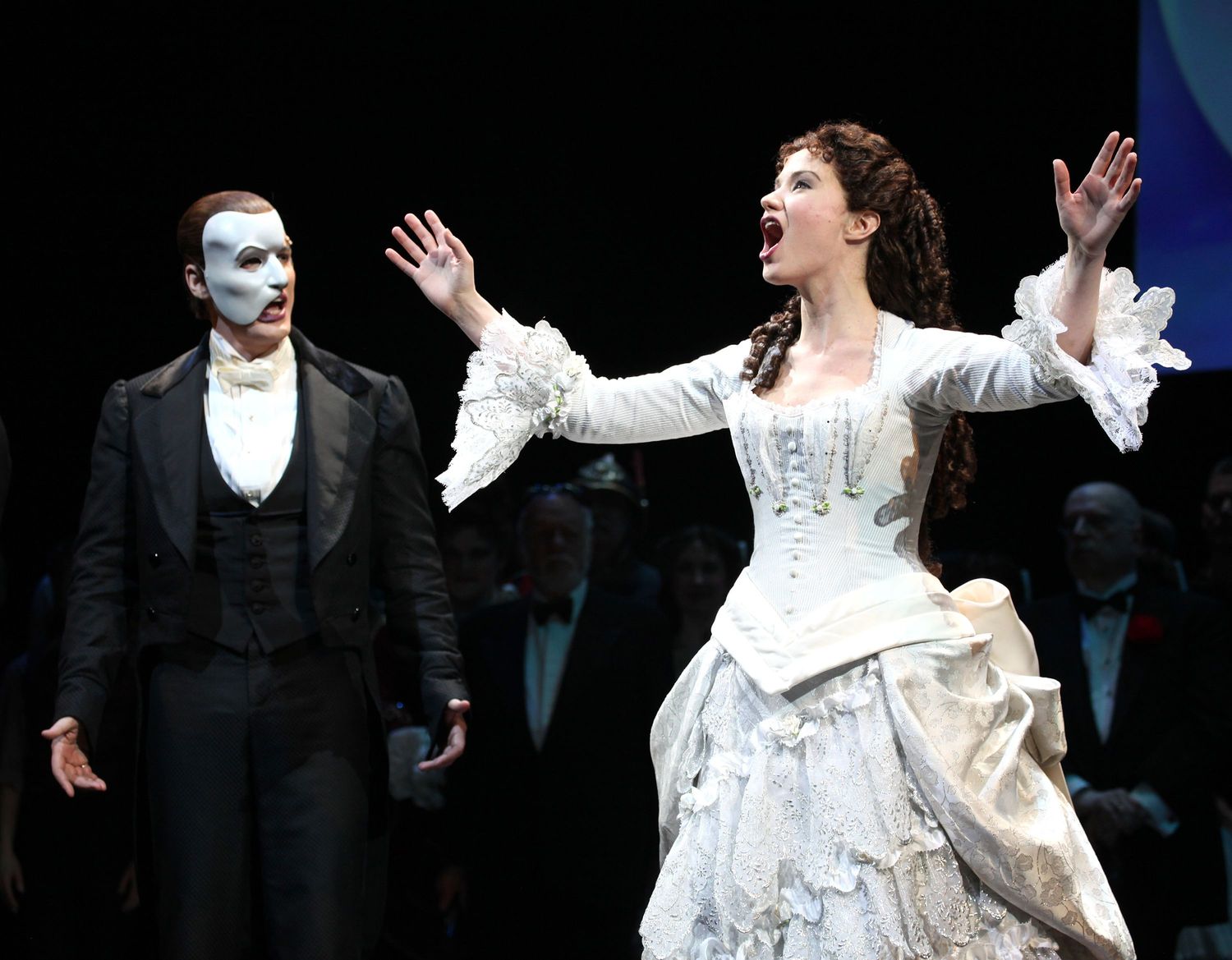Home>Events & Info>Opera>Where Was Opera Created
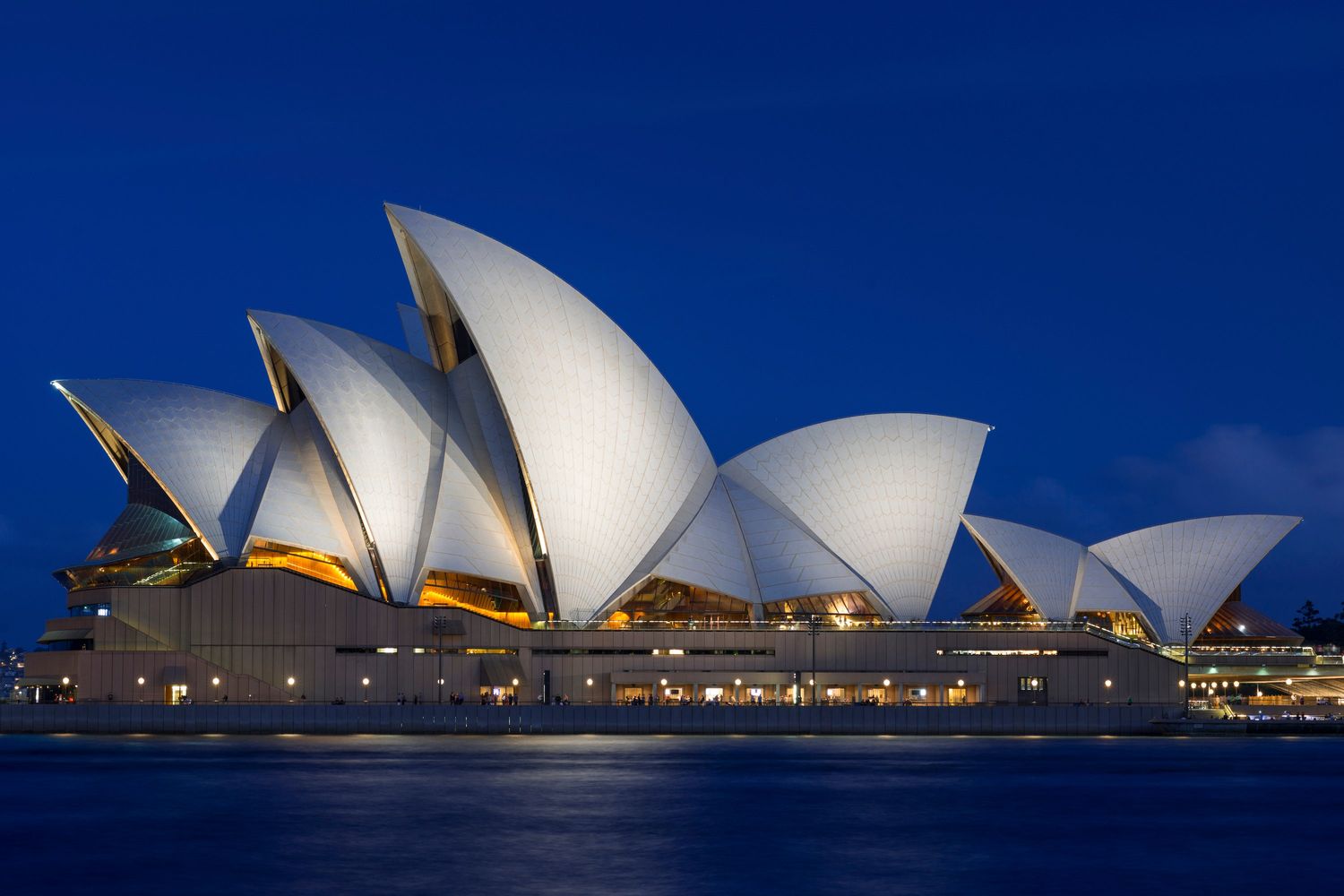

Opera
Where Was Opera Created
Modified: January 22, 2024
Discover the origins of opera and explore its rich history. Learn where opera was created and how this enchanting art form has evolved over the centuries.
(Many of the links in this article redirect to a specific reviewed product. Your purchase of these products through affiliate links helps to generate commission for AudioLover.com, at no extra cost. Learn more)
Table of Contents
Introduction
Opera, an exquisite art form that combines music, theater, and poetry, has been captivating audiences for centuries. It is a unique and powerful medium that stirs emotions, tells captivating stories, and showcases the incredible vocal talents of its performers. But have you ever wondered where opera was created and how it became the beloved art form it is today?
The origins of opera can be traced back to ancient times, where the combination of music and drama was a common element in Greek theater. However, it wasn’t until the 16th century that opera as we know it began to take shape.
The birth of opera can be attributed to the Florentine Camerata, a group of intellectuals and musicians in Florence, Italy. In their quest to recreate the emotional power of ancient Greek drama, they sought to revive the use of music in theater. This led to the development of the first true opera, “Dafne,” composed by Jacopo Peri and Ottavio Rinuccini in 1597.
Opera quickly gained popularity in Italy, particularly in the cities of Florence, Venice, and Rome. It became a significant part of the cultural landscape and was performed for noble patrons and the general public alike. The form continued to evolve, with composers such as Claudio Monteverdi pushing the boundaries of musical expression with his groundbreaking works.
The popularity of opera spread beyond Italy, thanks to traveling troupes and the patronage of European nobility. Opera houses began to emerge across the continent, each with its distinct style and repertoire. In France, opera underwent significant transformations under the patronage of Louis XIV, leading to the establishment of the Paris Opera, which remains one of the most renowned opera houses in the world today.
Ancient Origins of Opera
Opera, despite being considered a relatively modern art form, actually has ancient roots. The origins of Opera can be traced back to ancient Greece, where music and theater were deeply intertwined. The Greeks had a tradition of performing plays that combined spoken dialogue with musical accompaniment and performances. These theatrical productions often included choral singing, instrumental music, and dance.
While the sung elements of these ancient Greek plays were not considered to be opera in the modern sense, they laid the foundation for the development of the art form. Music was not only used as a form of entertainment but as a means of heightening the emotional impact of the theatrical performances.
One of the most famous Greek playwrights, Euripides, is credited with introducing melodic lyrics into his plays. His works utilized a form of musical theater known as dithyramb, which featured poetic recitations accompanied by choral singing and dancing.
Another important precursor to opera was the Roman theatrical tradition, which was heavily influenced by the Greeks. The Romans adopted and adapted many of the techniques and styles of Greek theater, including the use of music and song in their performances.
As the Roman Empire spread across Europe, so too did their theatrical traditions. This led to the development of new forms of musical drama, known as liturgical dramas, during the medieval period. These performances were often held in churches and featured biblical stories set to music and sung by clergy members.
While the early forms of sung drama were different from the fully realized operas we know today, they laid the groundwork for the blending of music and theater that would eventually give rise to opera. The desire to combine dramatic storytelling with music and song would continue to evolve and thrive in the centuries to come.
Florentine Camerata and the Birth of Opera
In the late 16th century, a group of intellectuals and musicians in Florence, Italy, known as the Florentine Camerata, played a crucial role in the birth of opera. The Camerata was composed of scholars, poets, musicians, and theorists who aimed to recreate the emotional power of ancient Greek drama.
The members of the Florentine Camerata were inspired by the Greek tragedies and their use of music to heighten the dramatic impact. They believed that the combination of music and drama could evoke powerful emotions in the audience, just as the ancient Greek performances did.
In their quest, the Camerata began experimenting with a new style of music that emphasized the text and focused on expressing the emotional content of the words. This marked a departure from the complex polyphonic style of the time, which often obscured the lyrics.
The Florentine Camerata believed that the ancient Greeks had used a form of monody, where a solo voice was accompanied by a simple chordal accompaniment. This style of music allowed for clear, expressive singing that emphasized the dramatic aspect of the text.
With the support and patronage of Count Giovanni de’ Bardi, a wealthy patron of the arts, the Florentine Camerata embarked on creating the first true opera. Their efforts resulted in the composition of “Dafne” in 1597, which is considered the first known opera.
“Dafne” was composed by Jacopo Peri, with a libretto by Ottavio Rinuccini. It tells the story of the Greek mythological character Daphne and her transformation into a laurel tree to escape the pursuit of the god Apollo. This groundbreaking work combined recitative (a speech-like style of singing) with ensemble pieces and instrumental interludes.
The birth of opera with “Dafne” marked a revolutionary moment in music history. It represented a new approach to music and drama, where the story was brought to life through expressive singing and music that enhanced the emotional impact of the words.
The influence of the Florentine Camerata and their pioneering work in opera composition spread throughout Italy and eventually to other parts of Europe. The birth of opera in Florence was a turning point in the evolution of music and theater, shaping the course of Western music for centuries to come.
Development of Opera in Italy
Following its birth in Florence, opera quickly gained popularity throughout Italy, becoming an integral part of Italian cultural life. The development of opera in Italy unfolded in several stages, with each period contributing to the growth and evolution of the art form.
During the early 17th century, the city of Venice emerged as a major hub for opera. The Venetian opera scene was characterized by the establishment of public opera houses, where performances were open to a wider audience, not just aristocratic patrons. This democratization of opera allowed for the dissemination of the art form to a broader range of individuals.
Opera composers such as Claudio Monteverdi played a significant role in the development of the genre during this time. Monteverdi introduced innovative musical techniques and dramatic storytelling in his operas, such as “L’Orfeo” and “The Coronation of Poppea.”
As opera continued to flourish, new forms and styles emerged. Opera seria, a serious and heroic form of opera, became popular in the 18th century. This genre featured elaborate vocal music, intricate melodic lines, and grandiose settings. Composers like Alessandro Scarlatti and Georg Frideric Handel were notable figures in the development of opera seria.
However, as the 18th century progressed, opera buffa, a lighter and more comedic style of opera, gained prominence. Opera buffa focused on everyday characters and situations, using humor and satire to entertain audiences. Composers such as Giovanni Paisiello and Domenico Cimarosa excelled in this genre.
By the 19th century, Italian opera had reached its golden age. Composers like Gioachino Rossini, Gaetano Donizetti, and Giuseppe Verdi left an indelible mark on the opera world with their masterpieces. Their works, which included “The Barber of Seville,” “Lucia di Lammermoor,” and “La Traviata,” showcased dramatic storytelling, emotional depth, and memorable melodies.
Italian opera also saw a shift towards nationalistic themes and movements. Operas like Verdi’s “Nabucco” and “Aida” became symbols of Italian unity and resistance against foreign domination.
The legacy of Italian opera continued well into the 20th century and beyond. The works of composers such as Giacomo Puccini, Ruggero Leoncavallo, and Pietro Mascagni carried the torch of Italian operatic tradition, blending innovation with the quintessential Italian passion and melodiousness.
Today, Italy remains a bastion of opera, with renowned opera houses in Milan, Rome, and other cities, attracting opera enthusiasts from around the world. The development of opera in Italy not only shaped the course of Western music history but also established Italy as the cradle of this extraordinary art form.
Spread of Opera to Europe
After its inception in Italy, opera quickly spread across Europe, captivating audiences in different countries and leaving a lasting impact on the cultural landscape of the continent. The groundbreaking art form found its way to various countries, adapting to different styles and influences along the way.
One of the earliest European countries to embrace opera was France. In the 17th century, opera took on a distinct French flavor under the patronage of King Louis XIV. The French opera, often referred to as tragédie lyrique, featured elaborate staging, ballet sequences, and a strong emphasis on dramatic storytelling. Composers like Jean-Baptiste Lully and Jean-Philippe Rameau crafted magnificent works that embodied the grandeur and elegance of the French court.
In Germany, opera underwent a significant transformation under the influence of composers such as Christoph Willibald Gluck and Richard Wagner. Gluck introduced reforms in opera, focusing on simplicity, clarity, and emotional sincerity. His works, like “Orfeo ed Euridice” and “Iphigénie en Tauride,” sought to balance the music and drama, placing an emphasis on the power of storytelling.
Wagner, on the other hand, revolutionized opera with his concept of the Gesamtkunstwerk, or “total work of art.” His operas, including the epic “Ring Cycle” and “Tristan und Isolde,” integrated music, poetry, and visuals into a unified whole, blurring the boundaries between opera and theater. Wagner’s approach to opera had a profound influence on the development of modern opera and set the stage for future innovations in the genre.
In England, opera gained popularity in the 17th century, primarily through the works of Henry Purcell. Purcell’s compositions, such as “Dido and Aeneas,” reflected a distinct English style, blending elements of Italian and French opera with native musical traditions. Opera continued to thrive in England in the ensuing centuries, with notable contributions from composers like Georg Friedrich Händel and Benjamin Britten.
Across the Atlantic, opera found a home in America as well. The first opera performance in North America took place in 1735 in Charleston, South Carolina. However, it wasn’t until the 19th century that opera truly took hold in the United States. The opening of the Metropolitan Opera House in New York City in 1883 marked a turning point for opera in America, solidifying its presence and attracting renowned performers from around the world. Today, opera houses across the United States continue to showcase a diverse range of operatic works.
The spread of opera to Europe not only enriched the cultural traditions of different countries but also fostered a sense of artistic exchange and collaboration. Opera became a universal language, transcending borders and captivating audiences with its powerful storytelling and sublime music. Its enduring popularity continues to shape the performing arts landscape worldwide.
Opera in France
Opera has a rich and vibrant history in France, which has significantly contributed to the development and evolution of this captivating art form. With its unique blend of drama, music, and visual spectacle, French opera has left an indelible mark on the world of opera.
The roots of opera in France can be traced back to the 17th century, during the reign of King Louis XIV. The king’s love for the arts and his desire to elevate the cultural prestige of France led to the establishment of the Académie Royale de Musique, later known as the Paris Opera. This institution became one of the most revered and influential opera houses in the world.
Under the patronage of King Louis XIV, French opera took on a distinctive style known as tragédie lyrique. This genre combined music, dance, and lavish stage productions to create grand spectacles that were performed for the court and nobility. Jean-Baptiste Lully, one of the earliest composers of French opera, played a pivotal role in shaping this style with his works, including “Armide” and “Atys.”
In the 18th century, French opera continued to evolve with the emergence of opéra comique, a lighter and more accessible form of opera. Opéra comique featured spoken dialogue interspersed with musical numbers, appealing to a broader audience. Composers such as François-André Danican Philidor and André-Ernest-Modeste Grétry excelled in this genre, creating charming and entertaining works.
However, it was in the 19th century that French opera reached its pinnacle of glory. Composers like Georges Bizet, Charles Gounod, and Jules Massenet created masterpieces that are still beloved and frequently performed today. Bizet’s opera “Carmen,” with its passionate storyline and iconic melodies, remains one of the most popular and widely performed operas in the world.
The Paris Opera, with its exquisite performances and grandeur, became synonymous with French opera. The construction of the Opéra Garnier, an architectural marvel, in the late 19th century further solidified the city’s status as a hub for opera. The Opéra Bastille, built in the 20th century, provided a modern venue for more contemporary productions.
French opera has also embraced innovation and experimentation. The 20th century saw the rise of composers like Claude Debussy and Maurice Ravel, who pushed the boundaries of traditional operatic conventions. Their works, such as Debussy’s “Pelléas et Mélisande” and Ravel’s “L’enfant et les sortilèges,” showcased a more impressionistic and inventive approach to opera composition.
Today, the legacy of French opera continues to thrive. The Opéra National de Paris remains a center for world-class opera productions, attracting both renowned international artists and new talents. The French dedication to artistry, theatricality, and the seamless integration of music and drama has left an enduring impact on opera as a whole.
From the grandeur of the tragédie lyrique to the charm of opéra comique and the innovative spirit of contemporary works, French opera continues to captivate audiences worldwide with its beauty, passion, and artistic excellence.
Opera in Germany
Germany has played a significant role in the world of opera, with a rich tradition that has contributed to the development and innovation of the art form. German opera has been characterized by its unique styles, renowned composers, and enduring contributions to the operatic repertoire.
Opera in Germany traces its roots back to the early 17th century, with the advent of the German Baroque opera. Notable composers of this period include Heinrich Schütz and Johann Heinrich Schmelzer, who created works that incorporated both operatic and sacred elements.
However, it was during the 18th and 19th centuries that German opera experienced its most significant growth and influence. One of the key figures in German opera was Christoph Willibald Gluck, who introduced reforms and innovations in opera composition. His works, such as “Orfeo ed Euridice” and “Iphigénie en Tauride,” focused on emotional sincerity, simplicity, and the integration of music and drama.
Richard Wagner, one of the most renowned German composers, made an indelible impact on the opera world. Wagner’s works, such as “Tristan und Isolde” and “The Ring Cycle,” were characterized by epic storytelling, innovative use of leitmotifs, and a fascination with deep psychological exploration. His concept of the Gesamtkunstwerk, or “total work of art,” revolutionized the genre, blending music, poetry, and visual elements into a cohesive whole.
German opera also embraced the romantic tradition, with composers like Carl Maria von Weber and Heinrich Marschner contributing to the development of the genre. Weber’s opera “Der Freischütz” and Marschner’s “Hans Heiling” showcased a fusion of supernatural elements, strong melodies, and German folk influences.
In the late 19th and early 20th centuries, German opera witnessed further evolution with the works of composers such as Richard Strauss and Kurt Weill. Strauss’s operas, such as “Salome” and “Der Rosenkavalier,” showcased lush orchestrations, intricate melodic lines, and complex characterizations. Weill’s works, such as “The Threepenny Opera” and “Rise and Fall of the City of Mahagonny,” blended elements of opera with popular music styles and social commentary.
Today, German opera continues to thrive, with renowned opera houses like the Bayreuth Festival and the Deutsche Oper Berlin showcasing a diverse range of operatic works. The dedication to musical excellence, meticulous attention to detail, and emphasis on the fusion of music and drama make German opera a cornerstone of the international opera scene.
German opera has left an enduring legacy, influencing composers and performers worldwide. The passion, artistry, and richness of German opera continue to captivate audiences and illuminate the depth and power of this remarkable art form.
Opera in England
England has a longstanding and unique relationship with opera, contributing to the development and evolution of the art form. English opera has its own distinct characteristics, incorporating elements of both foreign influences and native musical traditions throughout its rich history.
The roots of opera in England can be traced back to the 17th century when the genre first gained popularity. One of the earliest known English operas is “Dido and Aeneas,” composed by Henry Purcell in the late 17th century. Purcell’s works showcased a blend of Italian and French operatic styles, infused with a distinct English character.
In the 18th century, opera flourished in England with the establishment of the Italian opera seria tradition. Composers such as George Frideric Handel, who later became a naturalized British subject, made significant contributions to English opera. Handel’s operas, including “Julius Caesar” and “Rodelinda,” attracted both British and international audiences with their grandeur, virtuosic music, and compelling storytelling.
During the 19th century, English opera experienced a resurgence with composers like Arthur Sullivan, who collaborated with librettist W.S. Gilbert to create a series of immensely popular comic operas, known as the Savoy operas. These works, including “The Pirates of Penzance” and “The Mikado,” blended witty lyrics, catchy melodies, and satirical social commentary, becoming integral to the operatic repertoire.
As the 20th century unfolded, English opera further evolved, embracing diverse styles and approaches. Composers like Benjamin Britten made significant contributions to the genre with his powerful and evocative works like “Peter Grimes” and “The Turn of the Screw.” Britten’s operas presented a more modern and introspective take on the art form, exploring psychological depth and social themes.
English National Opera (ENO) and the Royal Opera House have played instrumental roles in promoting and showcasing English opera. These prestigious institutions have nurtured local talents, collaborated with renowned international artists, and staged a wide range of operatic works, from classics to contemporary pieces.
Today, English opera continues to thrive, with a vibrant and dynamic opera scene across the country. Opera companies, such as Glyndebourne and Opera North, contribute to the diverse and eclectic opera landscape in England, offering a platform for emerging artists and innovative productions.
The legacy of English opera is characterized by a distinct blend of tradition and innovation, drawing inspiration from various sources and musical styles. The unwavering dedication to storytelling, musical excellence, and theatricality has ensured that English opera remains an integral part of the global operatic tradition.
With its rich history, diverse repertoire, and commitment to pushing artistic boundaries, English opera continues to captivate audiences and contribute to the ever-evolving realm of opera worldwide.
Opera in America
Opera in America has flourished and evolved over the centuries, carving out its own unique presence in the cultural landscape. From its early origins to the thriving opera scene of today, America has embraced this captivating art form and contributed to its continued growth and innovation.
The history of opera in America dates back to the colonial era when performances of Italian opera were staged in major cities like New York and Charleston. However, it wasn’t until the 19th century that opera truly gained a foothold in the United States.
In the 19th century, as America’s cities grew and prospered, opera companies began to emerge and flourish. Italian opera was particularly popular, drawing on the talents of European singers and composers. The Metropolitan Opera House, which opened its doors in New York City in 1883, became a renowned institution that showcased the finest international talent and brought opera to a wider audience.
One of the most significant milestones in American opera occurred in the 20th century with the rise of American composers who sought to create a uniquely American operatic tradition. Composers like George Gershwin, Aaron Copland, and Leonard Bernstein fused elements of jazz, folk music, and American cultural influences into their operatic works.
Gershwin’s opera “Porgy and Bess” stands as a landmark achievement that tells the story of African American life in the South. Copland’s “The Tender Land” explores themes of rural American life, while Bernstein’s “West Side Story” reimagines Shakespeare’s Romeo and Juliet in the urban context of 1950s New York City.
In addition to these well-known composers, American opera has seen a growing number of contemporary composers pushing boundaries and exploring new artistic directions. Philip Glass, John Adams, and Jake Heggie are among the composers who have made significant contributions to the American operatic canon, infusing it with fresh perspectives and innovative musical styles.
America is also home to several prestigious opera companies, such as the Metropolitan Opera, Lyric Opera of Chicago, and San Francisco Opera, which attract world-class talent and produce a diverse range of operatic works. These companies continue to nurture local talent and collaborate with renowned international artists, drawing audiences from all walks of life.
The dedication to accessibility and outreach has fueled the growth of opera across America. Many opera companies offer educational programs, community performances, and initiatives to engage new audiences, making opera more inclusive and approachable.
Today, opera in America thrives as a vibrant and dynamic art form, reflecting the country’s diversity and cultural richness. With its continued commitment to artistic excellence, storytelling, and innovation, American opera promises to captivate audiences and contribute to the ever-evolving landscape of this remarkable musical tradition.
Conclusion
Opera, with its seamless integration of music, theater, and storytelling, has captivated audiences for centuries. Through its development and spread across different countries, opera has evolved and adapted, enriching the cultural fabric of each nation it touches.
From its ancient origins in Greece to its formal birth in Florence with the Florentine Camerata, opera has transcended time and boundaries, captivating audiences around the world. Italy played a central role in its early development, with composers like Monteverdi, Handel, and Verdi creating masterpieces that continue to inspire and amaze.
The spread of opera across Europe brought new styles and innovations. France, with its tragédie lyrique and opéra comique, added elegance and grandeur to the genre. Germany, with its rich tradition of Baroque and Romantic opera, contributed profound musical and dramatic expressions through composers like Gluck and Wagner.
In England, opera found its own voice, blending foreign influences with native elements to create a distinct sound. The works of Purcell and the comedic genius of Gilbert and Sullivan have become enduring classics in the operatic canon.
America, while initially importing European opera, found its own identity through composers like Gershwin, Copland, and Bernstein, who infused American cultural influences into their works. Today, American opera continues to thrive and innovate, pushing artistic boundaries and presenting diverse stories on the stage.
Throughout its history, opera has been shaped by the passion and talent of composers, librettists, singers, musicians, directors, and countless other artists. It has celebrated humanity’s emotions, struggles, and triumphs, offering a platform for self-expression and exploration.
Opera continues to evolve, welcoming new voices, styles, and approaches. It remains a living art form, captivating audiences with its powerful music, compelling narratives, and spellbinding performances. From the grand opera houses of Europe to regional theaters and innovative productions around the globe, opera continues to thrive, reminding us of its enduring beauty and ability to touch the depths of our souls.
So, whether you are a long-time opera enthusiast or a newcomer to the world of this extraordinary art form, let the music and drama transport you to new realms of emotion and storytelling. Let the words and melodies of opera resonate within you, forging a lasting connection that brings joy, catharsis, and a deeper appreciation for the beauty of the human artistic spirit.


